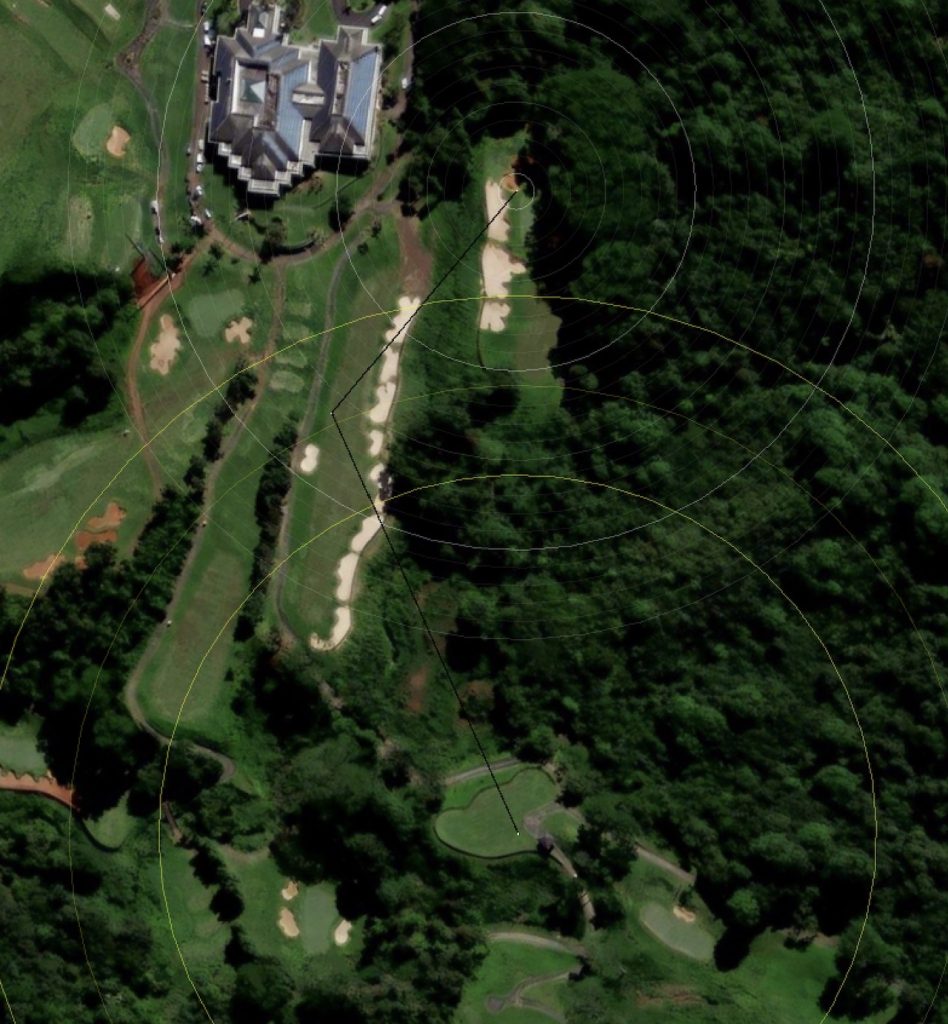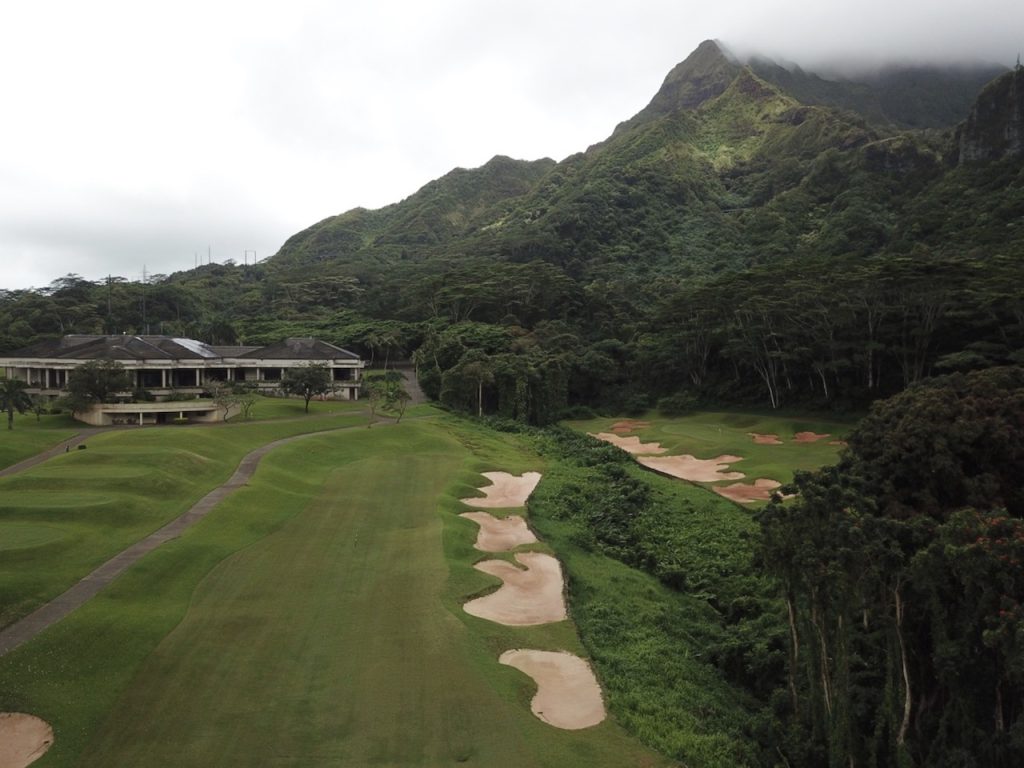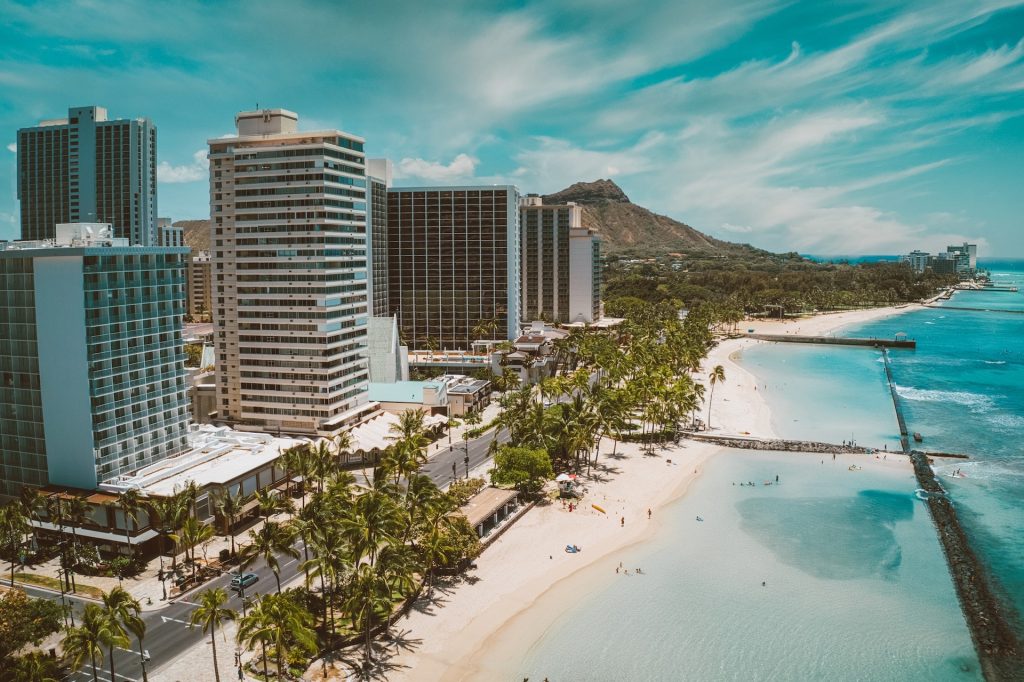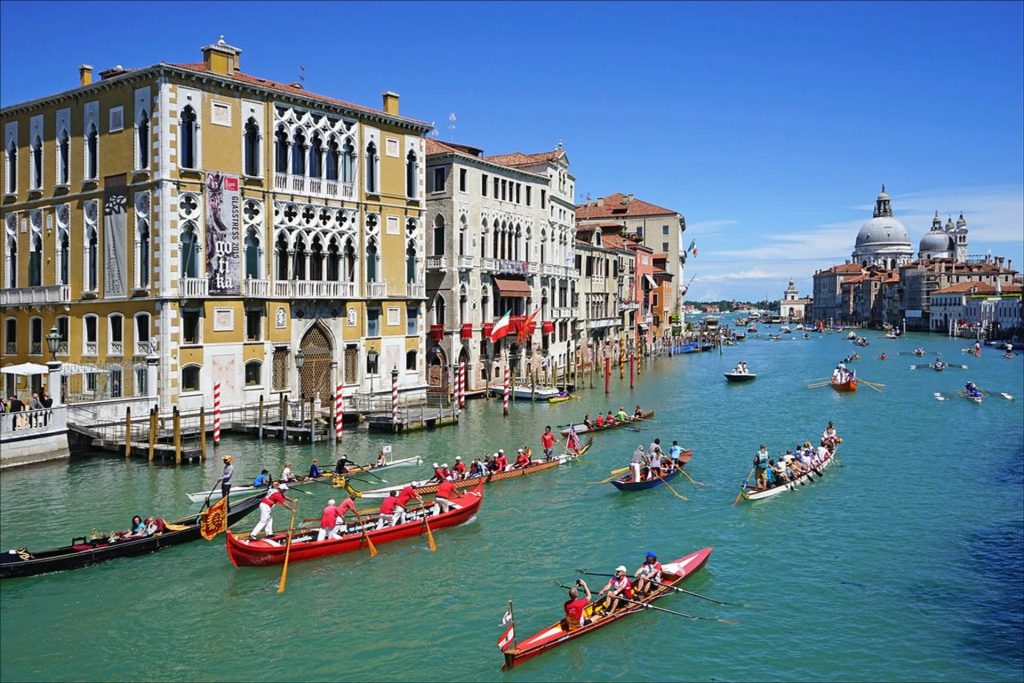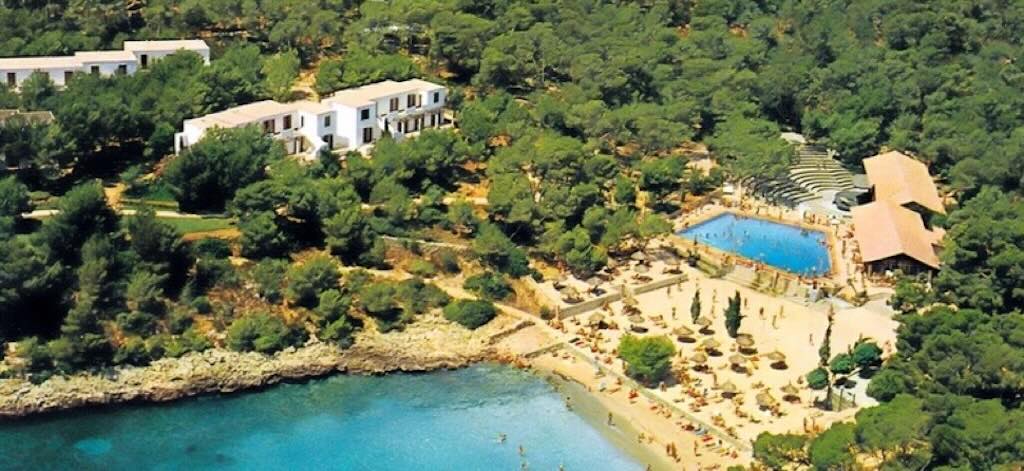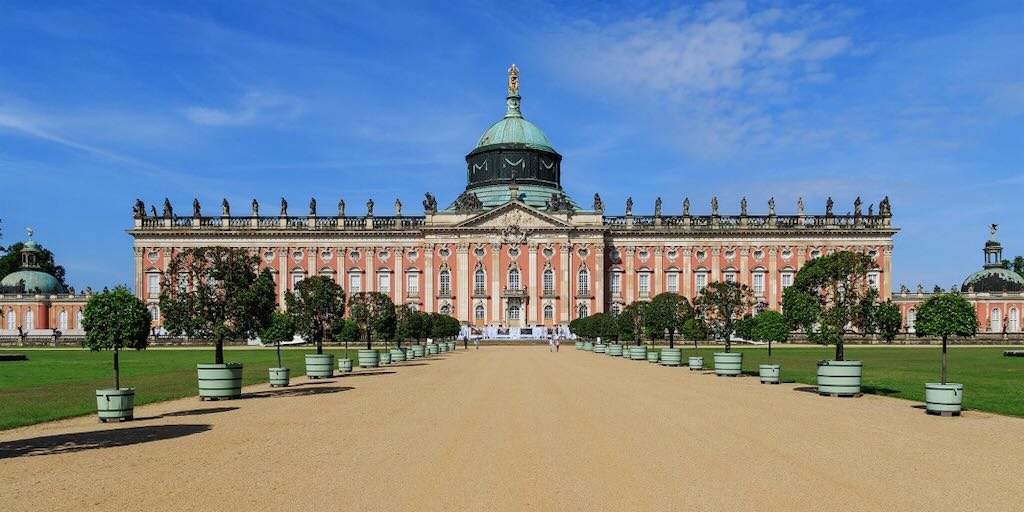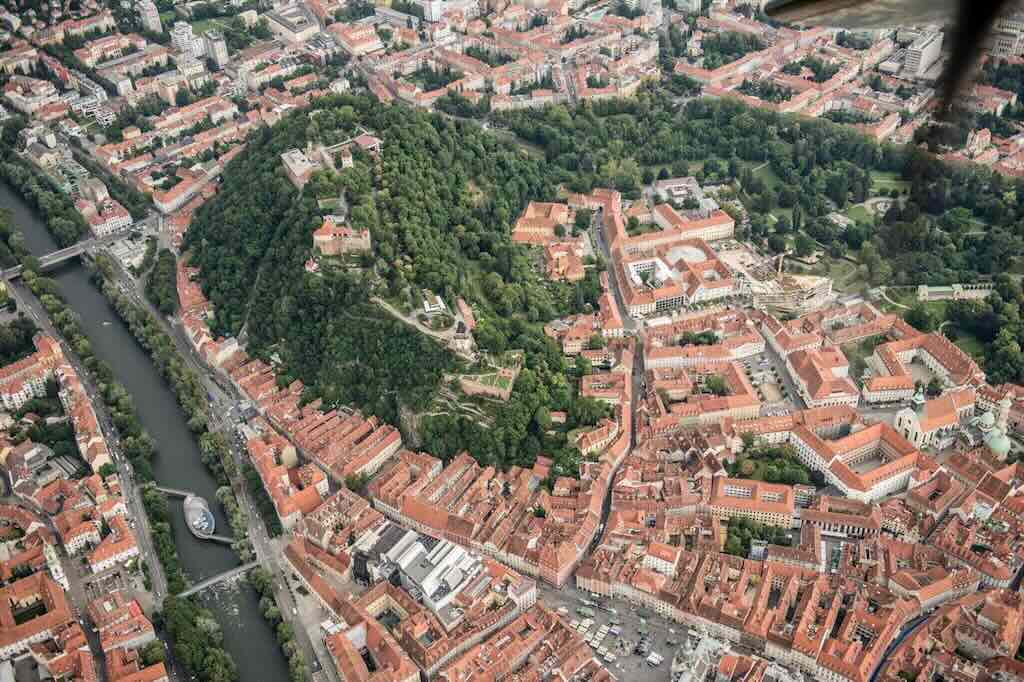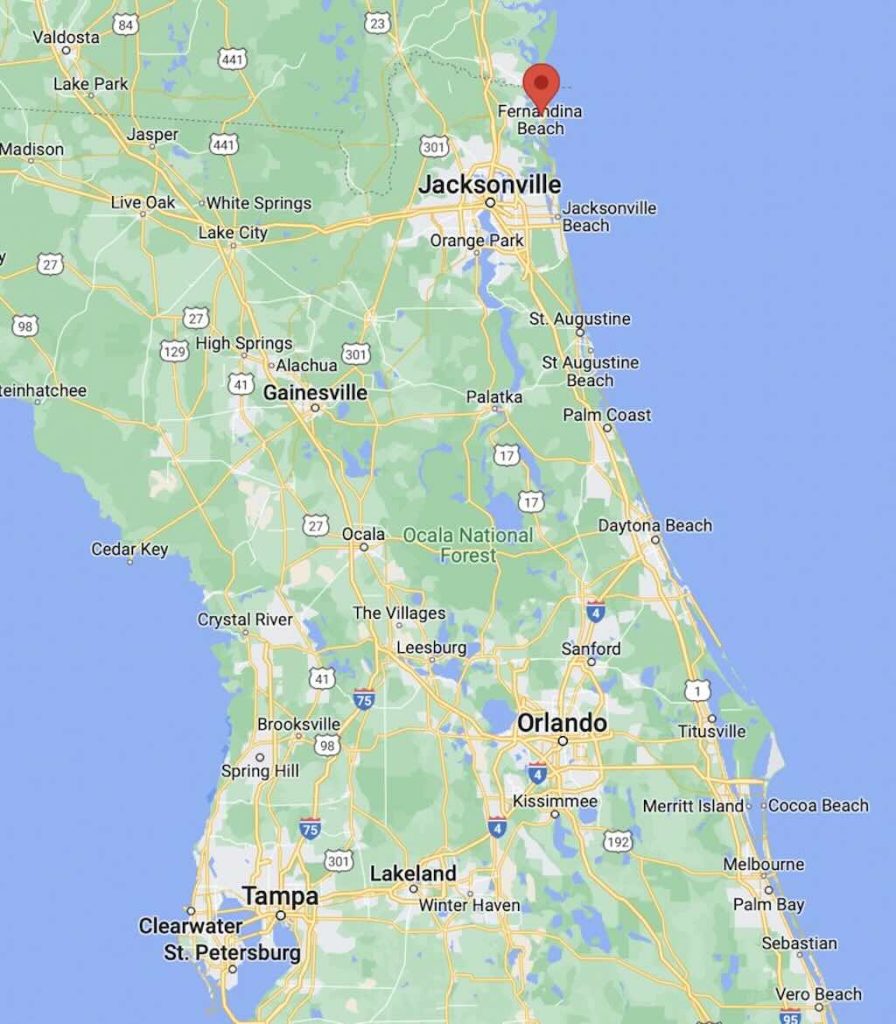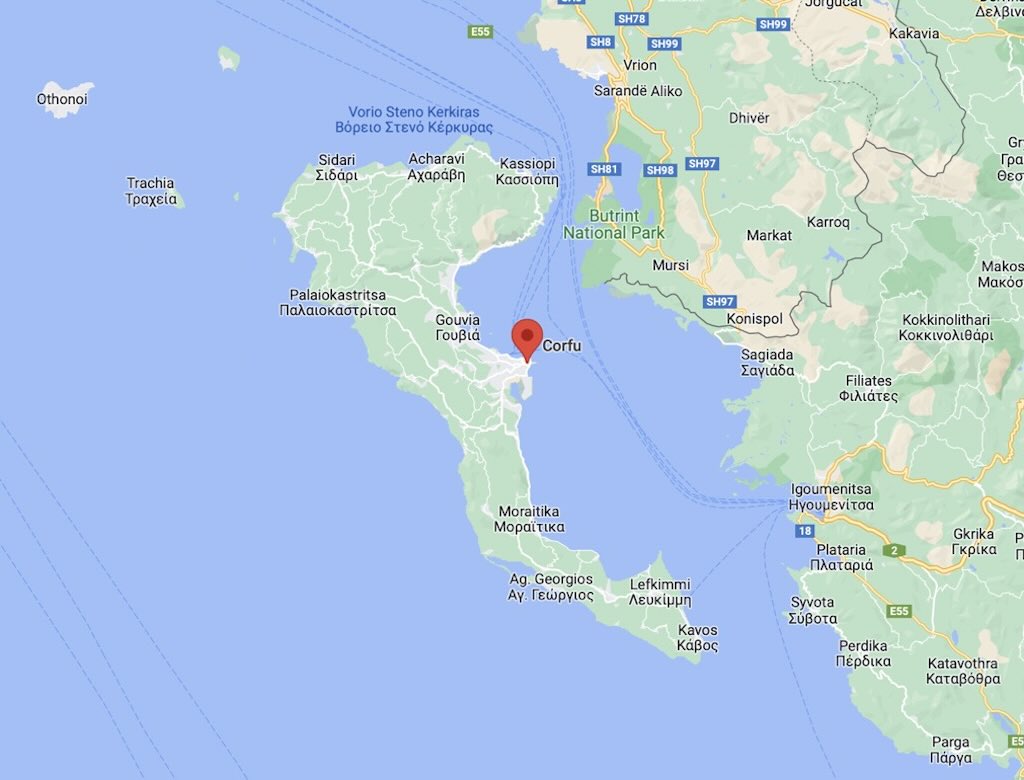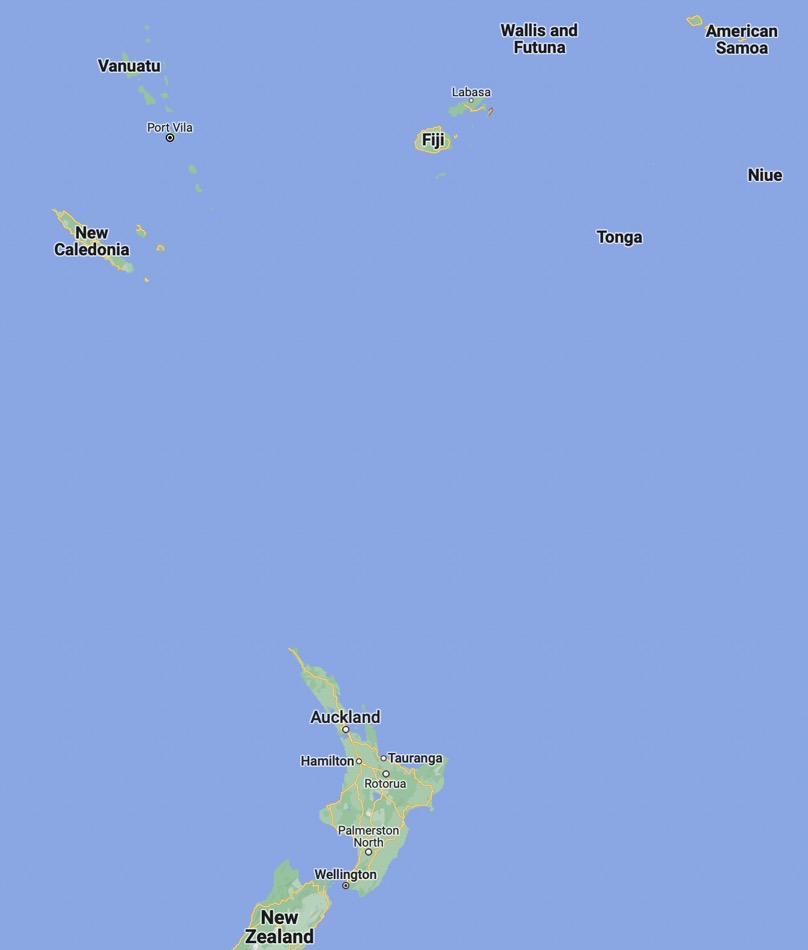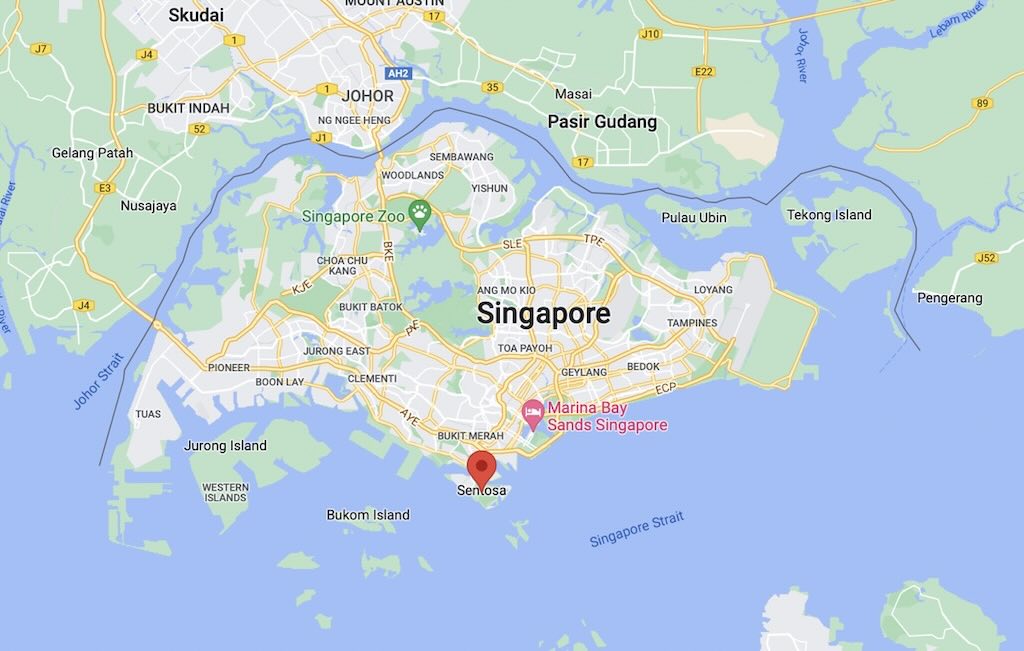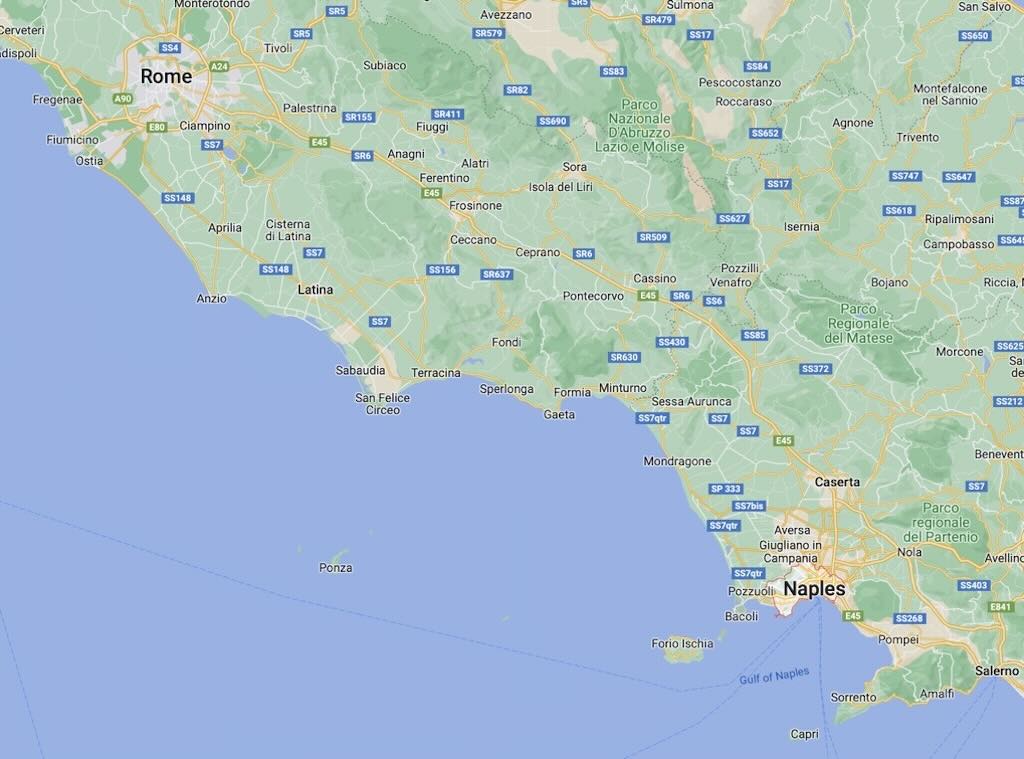In October-November 1999 I had speaking engagements in Honolulu, followed by Tokyo, and then Perth and Melbourne, before making a stopover in Singapore on the way home. Travelling with my wife, we were able to carve out a few days in each location (except Melbourne).
This post is about our stay in Honolulu.
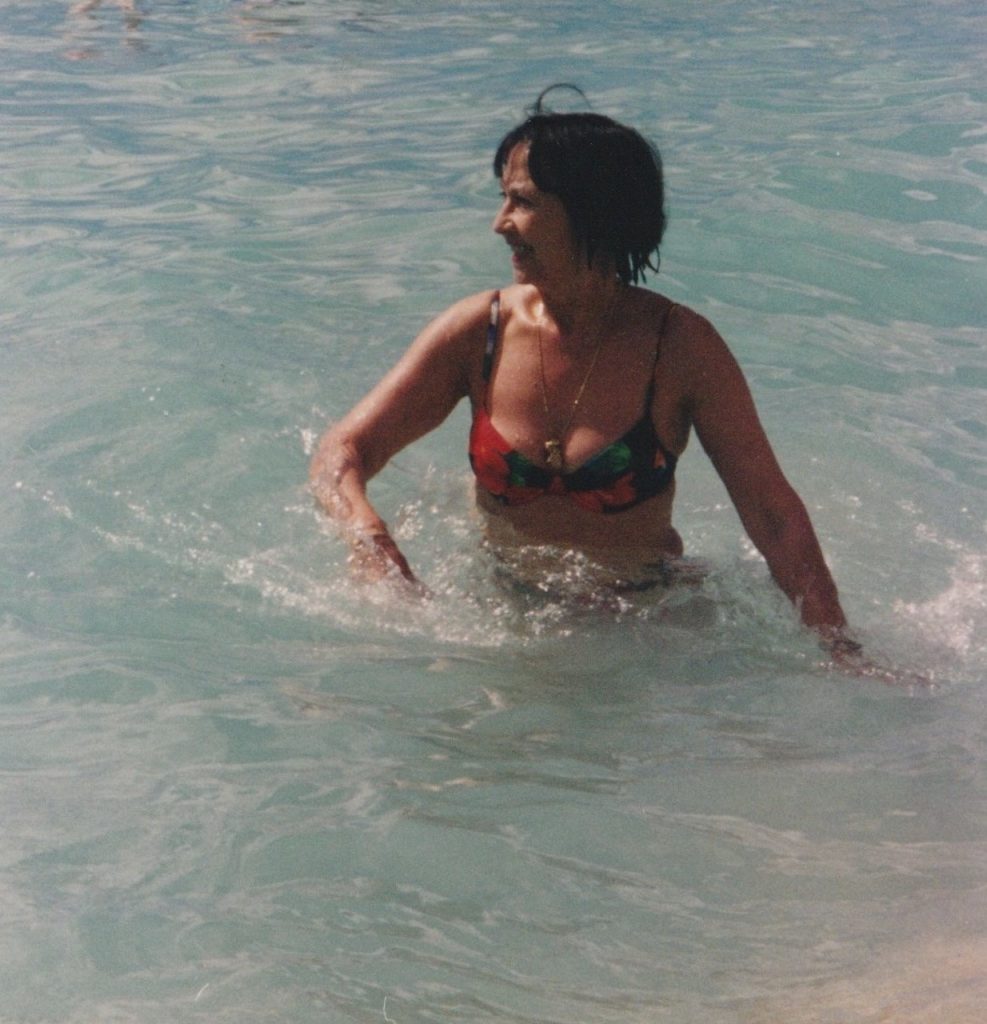
We stayed at the conference hotel which I think was the Sheraton Waikiki. My wife spent all her time on Waikiki Beach, but we did manage an Hawaiian evening, with the garlands around our necks and the dancing, etc.
I brought out of hiding my Hawaiian shirt that I had picked up in Kauai in 1991, and for some reason we took a day out to play a local golf course.
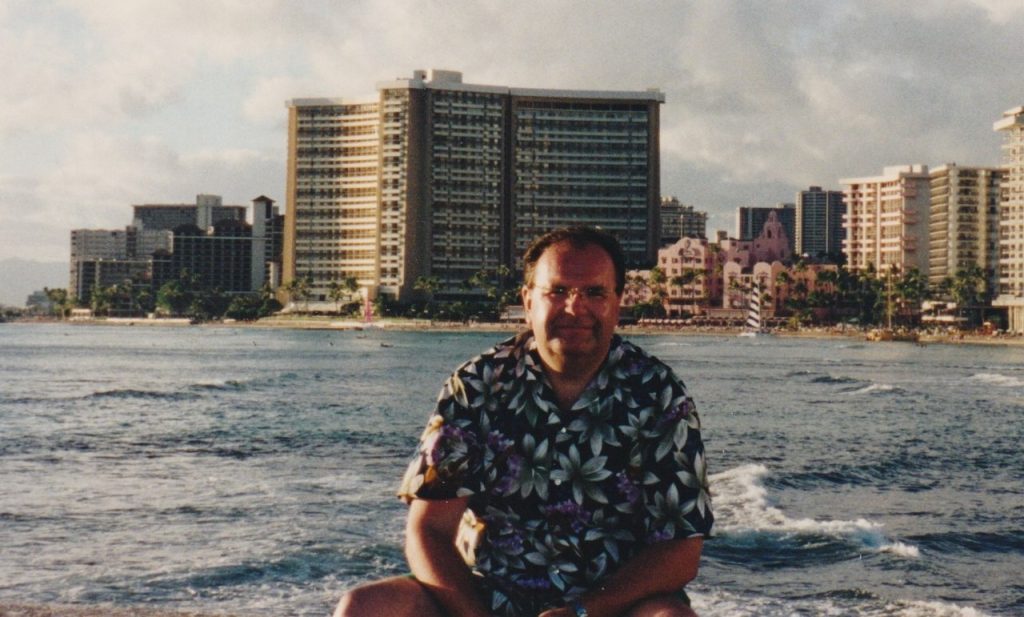
Ko'olau Golf Club
Located just a 30-minute drive over the Pali Highway from downtown Honolulu was the 6,684-metre Ko’olau Golf Course in Kaneohe. Built as a $82 million private club by a Japanese conglomerate, the original design was by Dick Nugent, and it opened in 1992.
At the time it was considered one of the toughest courses, if not the toughest, in the US, and named one of the top three golf clubs in Hawaii by Golf Digest.
The course made its way through three different climate zones and was carved out of the rain forest on the windward side of the 2,000-foot Ko’olau Range mountain.
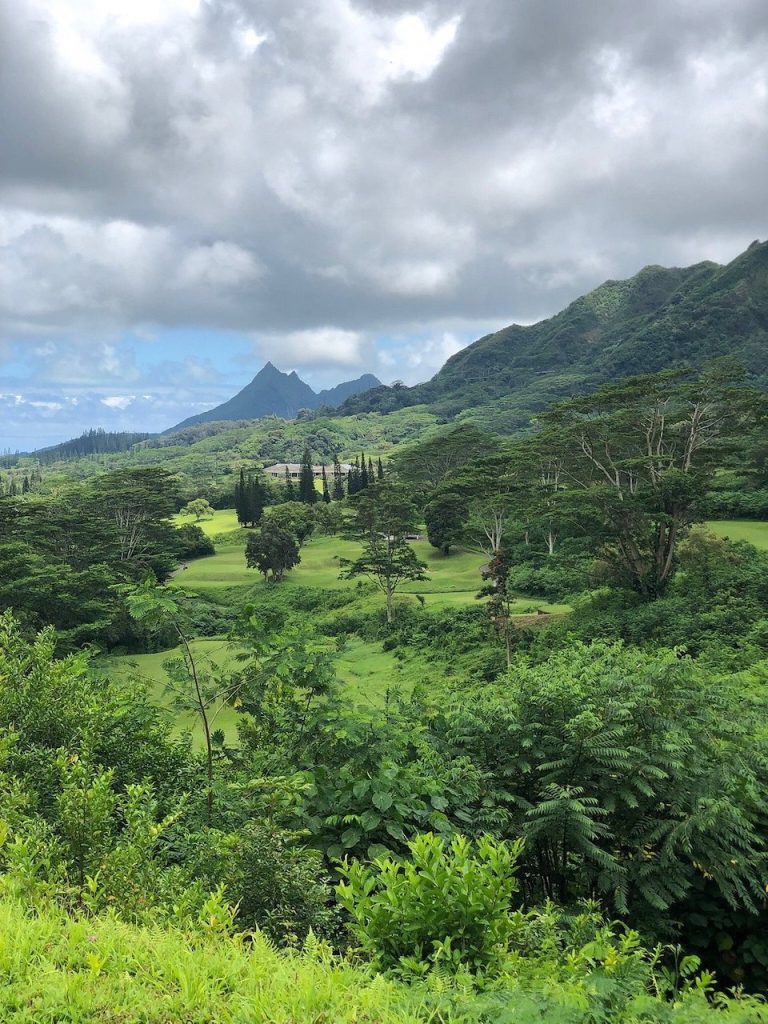
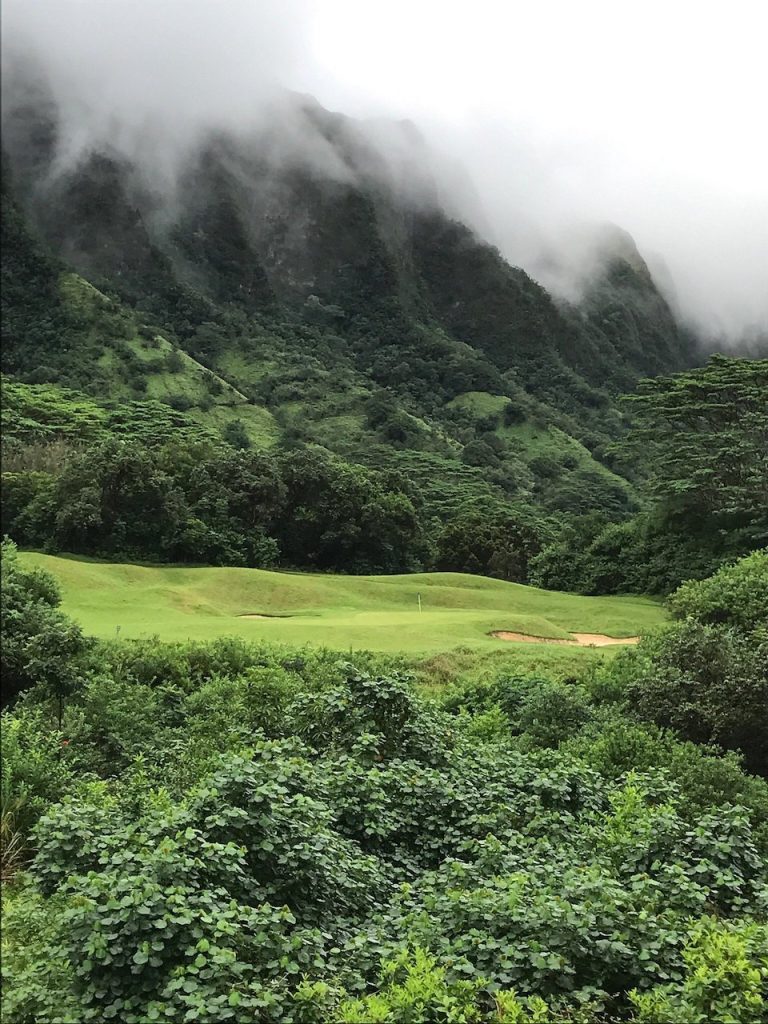
We played it in very late October 1999, but sometime later it slowly fell into disrepair and was bought by the First Presbyterian Church of Honolulu.
They bought it for the massive 11,600 square-metre conference centre and clubhouse which was used for their congregation and for marriages. They wanted to use the golf course to generate money for their congregation.
I understand they made the original course more ‘playable’, and the ‘slope‘ dropped from an initial 162 to ‘only’ 155 (which was the maximum allowable at the time). By 2012 the course operator had cleared back the jungle underbrush and took out bunkers, making it a playable par-72 resort course (blue tees) with a ‘slope’ of 138.
Tom Doak, a well known golf course architect of the Pete Dye school, rated the course a ‘zero’ out of 10.
Later I saw that the course was a par-76 and the ‘slope’ from tournament tees was 152. It was still rated 7th in the Top 100 list for the US in June 2008.
From 26 March 2020 Hawaii was shut down to tourists, after they installed a 14-day quarantine upon arrival (in addition there were inter-island travel restrictions for residents).
It was only from 15 October 2020 when a negative COVID-19 test allowed mainland tourists to skip the quarantine. Golf courses in Hawaii were closed by order in April and re-opened in May, but another local stay-at-home, work-from-home ordinance followed briefly in August that kept courses closed.
For the United States as a whole, golf had been booming during the pandemic, as many players looked for any chance to spend time outside and waves of new golfers tried the sport. There were reports that rounds played in the US in August 2020 were 20% up over 2019.
However, this was not the case in Hawaii, and when the business dropped to almost nothing, the Ko’olau Golf Course closed its doors on 28 September 2020.
In April 2021 there was a report that the course was still being managed by a school of golf. They had bought from the club the range picker, four mowers and a golf cart, and had to buy new flagsticks, cups, tee markers, sand, etc.
The last message I saw was that the owners of the land were looking towards sustainable agriculture options for reusing the land. It’s possible that the driving range and the first 9 holes might be kept open for the golf school.
On the 18 January 2025 I found the following video Ko’olau Golf. Just Like Heaven. KMR School 2024. So it looks like the school is still working on 9 holes.
Our experience on the golf course
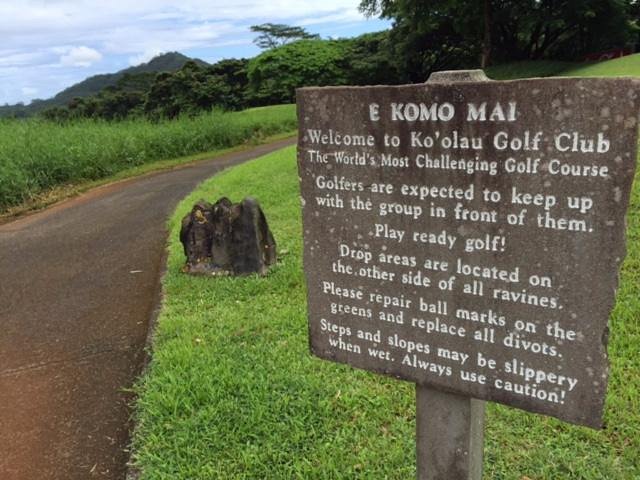
I can’t think why we decided to go and play golf, when we were sitting on Waikiki Beach.
I do remember that the hotel organised everything, and all we had to do was take the stretch-limo up to the golf course. It was in 1999 but we still paid just over $200 for two rounds, a buggy, golf club rentals, and a fixed-price golfers BBQ in the clubhouse (I still have my credit card accounts).
When we arrived, it took us ages to find the clubhouse because the driver dropped us at the main entrance to an enormous conference centre with a waterfall in the middle.

We thought it was a joke when they asked us our handicaps (at the time 18 and 24) and they gave us 40 golf balls with the buggy. It was said that a player would need the number of ball equal to their handicap. We actually had to ask someone on the 17th hole to give us four more balls to finish the round.
I remember not enjoying the course, it was just too difficult. I have this vague idea that that there were 26 dropping zone on the course, because almost every hole was surrounded by the rain forest and many had one or more ravines to cross. I also remember rapidly giving up writing anything on the score card.
If you are interested, check out this video (part I) and this video (part II), with two players, one trying to break par.
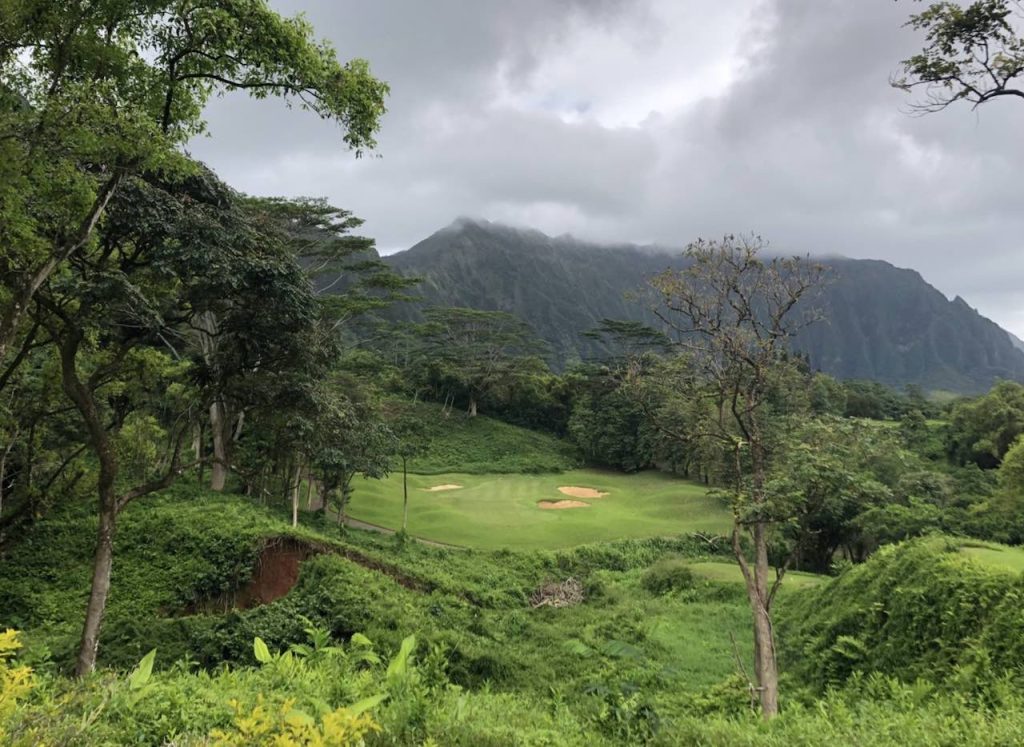
Above we have the 10th hole, a 386 metre par-4, and below we have the 15th hole, a 339 metre par-4.
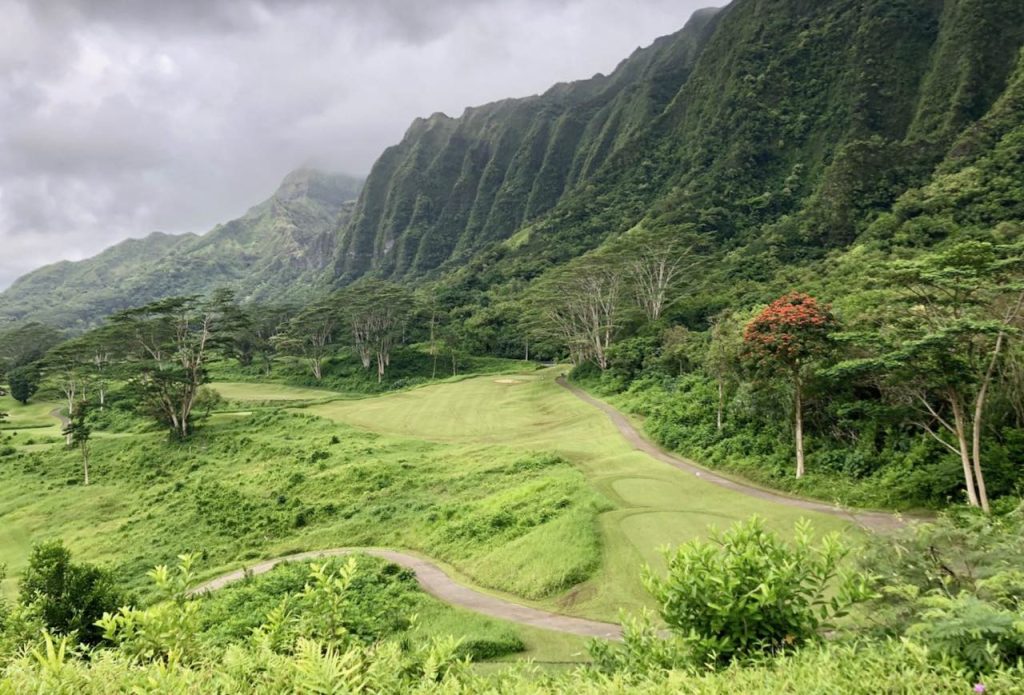
The 18th on Ko'olau
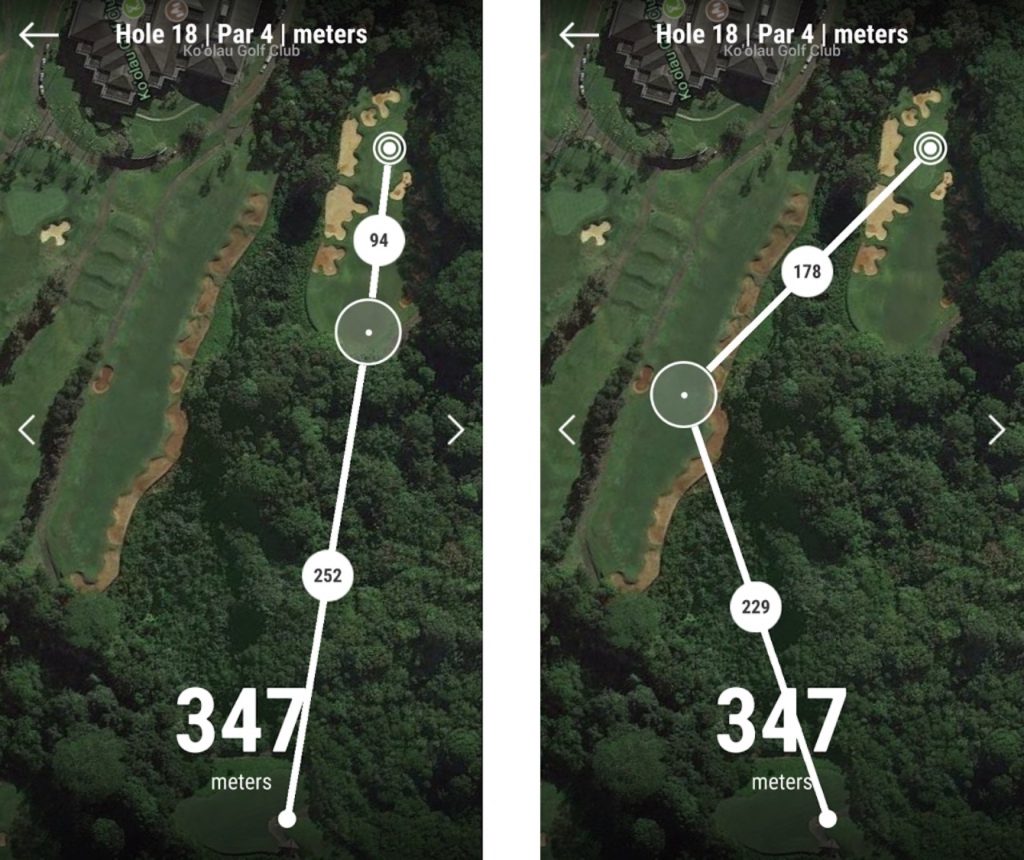
We had caught up with a local player on the 17th, and could ask him to loan us those four balls.
I’ve not seen a mention of this, but when we arrived on the 17th our local player had just telephoned the clubhouse. Next to the 17th tee there was a direct line to the clubhouse. You could challenge the course for $10. They would send someone out in a buggy and if the player pared the 18th, the green-fee was reimbursed, and the player won a golf bag with “I pared the 18th at Ko’olau” embroidered on the side.
It wasn’t the first time he had tried, and it wasn’t the first time he had failed. We did not try, and were just happy to finish the course and get something to eat.
Above we can see the two options, on the right the ‘safety’ option, and on the left the ‘hit-it-and-hope’ option. The second option was a blind one over the trees. Below we can see a different view of the options (the two rings around the tee box are 200 m and 250 m).
The last photo is of the 18th green to the side of the clubhouse.
